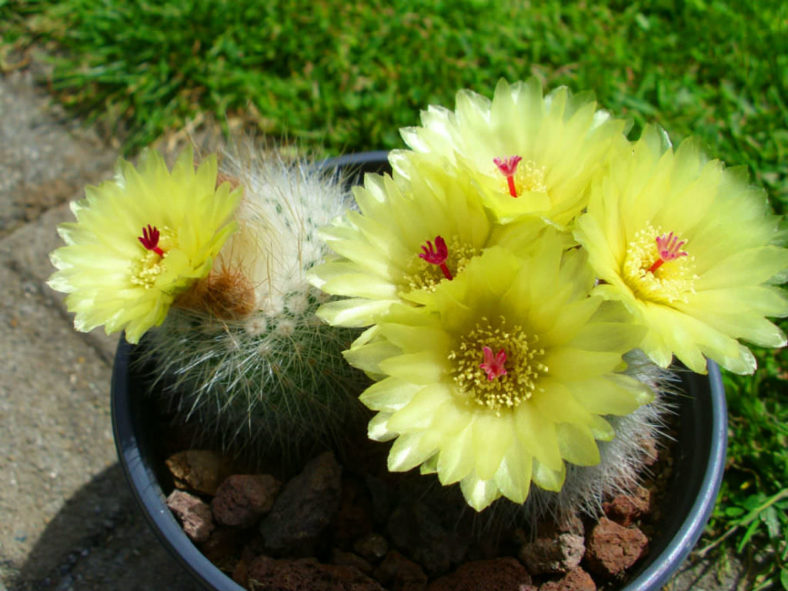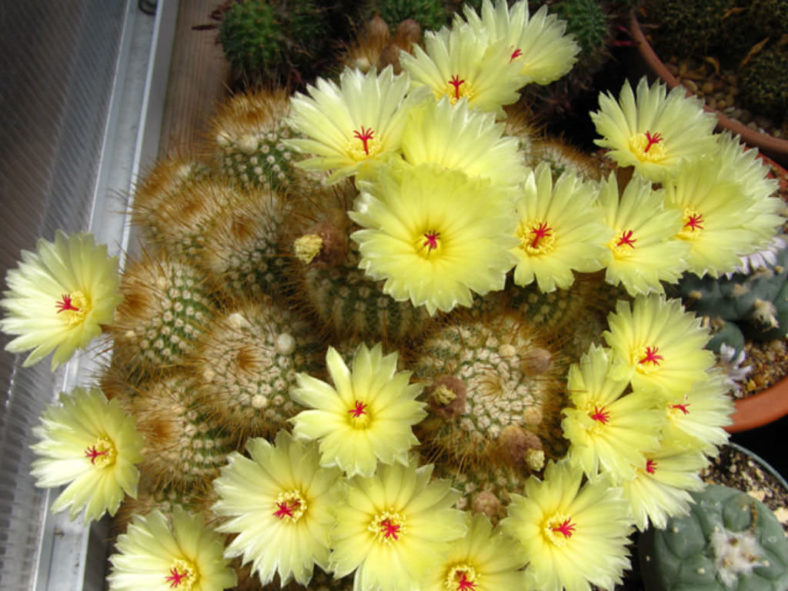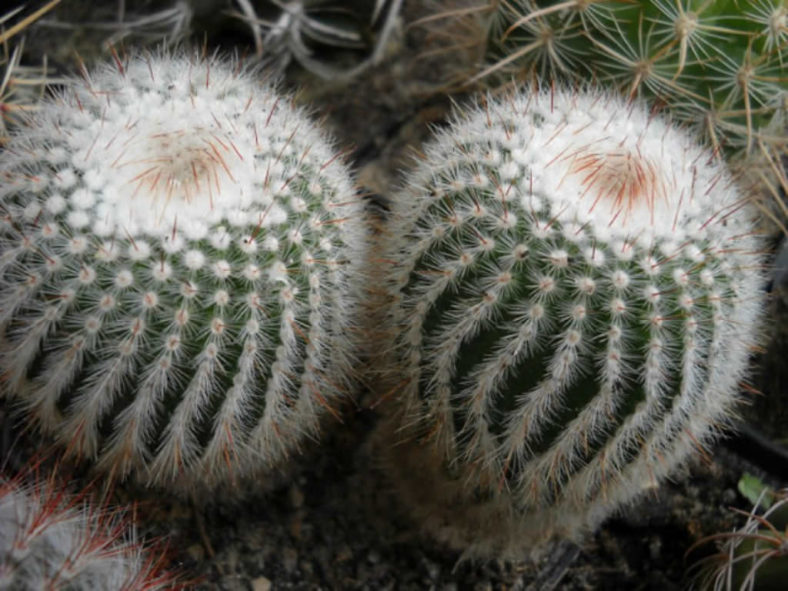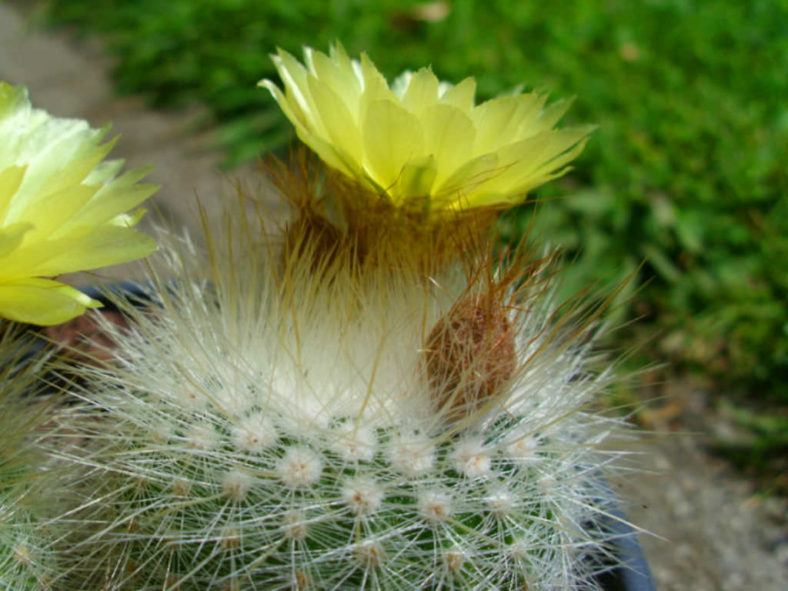Scientific Name
Parodia scopa (Spreng.) N.P. Taylor
Common Name(s)
Silver Ball Cactus, Snowball Cactus
Synonym(s)
Cactus scopa, Echinocactus scopa, Echinopsis scopa, Malacocarpus scopa, Notocactus scopa, Parodia scopa subsp. scopa, Peronocactus scopa
Scientific Classification
Family: Cactaceae
Subfamily: Cactoideae
Tribe: Notocacteae
Genus: Parodia
Etymology
The specific epithet "scopa (SKOH-puh)" means "broom" and refers to the long spines.
Origin
Parodia scopa is native to southern Brazil (Rio Grande do Sul) and Uruguay.
Description
Parodia scopa, formerly known as Notocactus scopa, is a beautiful cactus with spherical to cylindrical stems with 25 to 40 tuberculate ribs lined with white woolly areoles that bear clusters of white and red-brown spines. The stems can grow up to 20 inches (50 cm) tall and 4 inches (10 cm) in diameter. Each areole bears 2 to 12, usually 4 needle-like, up to 0.5 inches (1.2 cm) long central spines, and numerous bristle-like, up to 0.3 inches (0.7 cm) long radial spines.
The flowers are yellow with a red or wine-colored stigma and appear at the apex of the stem in spring. They are up to 1.6 inches (4 cm) long and 1.8 inches (4.5 cm) in diameter. The fruits are spherical, pale brown, up to 0.3 inches (0.7 cm) in diameter, and have numerous black seeds inside.

Hardiness
USDA hardiness zones 9b to 11b: from 25 °F (−3.9 °C) to 50 °F (+10 °C).
How to Grow and Care
If you can grow cacti and succulents successfully, you can likely grow the popular Parodia without too much trouble. However, it is key to remember that Parodias do not like direct sunlight and are accustomed to more even water than many other cacti species. The cactus mustn't be exposed to prolonged dampness and sitting water. Never let your cactus sit in a dish of water. To encourage better flowering, allow the plants to enjoy a cooling period in the winter and dramatically cut back watering. Unlike other cacti species, however, you don't need to stop watering entirely. Lastly, make sure to fertilize during the growing season for the best results.
Repot as needed, preferably during the warm season. To repot Parodia, make sure the soil is dry before repotting, then gently remove the pot. Knock away the old soil from the roots, making sure to remove any rotted or dead roots in the process. Treat any cuts with a fungicide. Place the plant in its new pot and backfill with potting soil, spreading the roots out as you repot.
Learn more at How to Grow and Care for Parodia.
Links
- Back to genus Parodia
- Succupedia: Browse succulents by Scientific Name, Common Name, Genus, Family, USDA Hardiness Zone, Origin, or cacti by Genus
Photo Gallery
Click on a photo to see a larger version.


